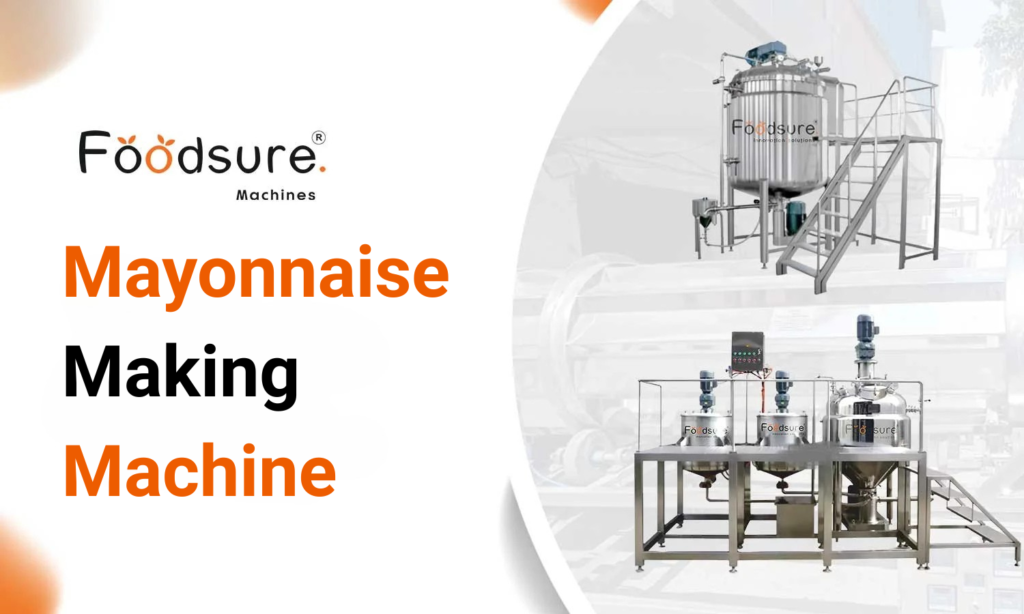
Introduction
In today’s fast-paced food industry, mayonnaise making machines have become an essential tool for manufacturers who aim to deliver smooth, creamy, and consistent products. Whether you’re running a small startup or a large-scale factory, an efficient mayonnaise production setup can completely transform your business.
Understanding Mayonnaise Production
Ingredients Used in Mayonnaise
The main ingredients in mayonnaise are simple: egg yolk, oil, vinegar or lemon juice, salt, and spices. However, achieving that perfect balance of taste and thickness requires precise mixing and temperature control.
The Science Behind Emulsification
Mayonnaise is an emulsion, meaning it combines two liquids (oil and water-based ingredients) that don’t naturally mix. The machine uses high-speed mixing to create a stable blend.
Why Consistency Matters
Consistency is everything. Whether it’s for restaurant supply or packaged sales, consumers expect the same smooth texture every time — and machines make that reliability possible.
What is a Mayonnaise Making Machine?
A mayonnaise making machine is an advanced system designed to mix, blend, and emulsify ingredients automatically. It ensures the product remains stable, hygienic, and uniform throughout production.
How It Simplifies the Process
Instead of manual whisking or small mixers, these machines automate everything — from oil feeding to emulsification — saving time and reducing errors.
Benefits for Manufacturers
- Better quality control
- Increased production capacity
- Less labor required
- Improved hygiene and food safety
Types of Mayonnaise Making Machines
Batch Type Machine
Best for small-scale or pilot production where small quantities are processed at a time.
Continuous Mayonnaise Production Machine
Ideal for large industries that need nonstop production and consistent texture.
Vacuum Emulsifying Machine
Creates a fine, lump-free texture by removing air bubbles during emulsification.
Industrial Mayonnaise Mixer
Heavy-duty machine used for high-volume output and continuous mixing.
Working Principle of a Mayonnaise Machine
- Ingredients are added to the mixing tank.
- The emulsifier begins blending oil and water components.
- The vacuum system removes air bubbles for a smoother finish.
- Homogenization ensures stability and consistent viscosity.
Temperature and speed can be adjusted based on recipe requirements — making every batch perfect.
Key Features of a Quality Mayonnaise Machine
- Stainless Steel Design for hygiene
- Automatic Control Panels for precision
- Vacuum & Heating Options for better emulsification
- Easy Cleaning Systems for convenience
Advantages of Using a Mayonnaise Making Machine
- Produces uniform texture and taste
- Reduces manual labor
- Saves time and raw material
- Maintains hygiene and safety
- Offers long-term cost benefits
Mayonnaise Machine Capacity and Design
When selecting your machine, consider:
- Small-scale (20–50L) for startups
- Medium (100–300L) for growing units
- Industrial (500L and above) for factories
Many manufacturers offer custom-built machines depending on production needs.
How to Start a Mayonnaise Business
Starting a mayonnaise business is easier than it sounds:
- Conduct market research
- Choose the right mayonnaise making machine
- Source quality ingredients
- Get FSSAI license and safety approvals
- Design attractive packaging
- Promote your brand online and offline
Maintenance Tips
- Clean tanks and blades after each batch
- Check for leaks or seal damage
- Lubricate moving parts regularly
- Schedule professional maintenance twice a year
Foodsure Machines – Your Reliable Partner
Foodsure Machines specializes in high-quality food processing equipment, including mayonnaise making machines. With a focus on performance, safety, and customer satisfaction, Foodsure supports businesses from installation to after-sales service.
Their machines are trusted by both new entrepreneurs and established brands for reliability and easy operation.
Common Problems and Troubleshooting
| Problem | Possible Cause | Solution |
|---|---|---|
| Lumpy texture | Poor emulsification | Check blade speed and ingredient order |
| Overheating | Continuous operation | Allow cooling intervals |
| Excess noise | Worn bearings | Replace or lubricate parts |
Cost and Investment Planning
Machine cost depends on:
- Capacity
- Automation level
- Material quality
A high-quality mayonnaise machine ensures excellent ROI through reduced waste and higher production output.
Future of Mayonnaise Production
The future is automation and sustainability. Smart control panels, energy-saving motors, and eco-friendly materials are transforming the way mayonnaise is produced — faster, cleaner, and greener.
Conclusion
A mayonnaise making machine is more than just equipment — it’s the backbone of a successful mayonnaise business. With growing demand for ready-to-use food products, investing in reliable machinery ensures both consistency and profitability. Partner with trusted providers like Foodsure Machines and take your food business to the next level.
FAQs
1. What capacity is ideal for small mayonnaise startups?
Ans: A 20–50L machine is perfect for small businesses or pilot production.
2. How does a vacuum emulsifier improve texture?
Ans: It removes air during mixing, giving mayonnaise a smooth and creamy consistency.
3. Can the same machine make other sauces?
Ans: Yes, it can also produce salad dressings, creams, and other emulsified sauces.
4. How often should I maintain the machine?
Ans: Basic cleaning after each use and a full maintenance check every 6 months is recommended.
5. Why choose Foodsure Machines?
Ans: Because they provide reliable, durable, and easy-to-operate machines backed by full technical support.
